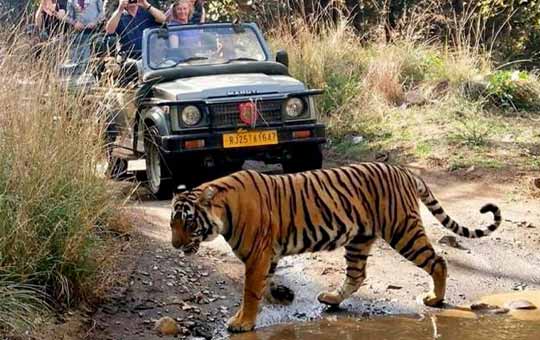Top Sights in Ranthambore National Park
Ranthambore National Park, located in the Sawai Madhopur district of Rajasthan, is one of India’s most celebrated wildlife reserves. Once a royal hunting ground, it is now a protected sanctuary renowned for its population of Royal Bengal Tigers. But beyond the thrill of spotting big cats, Ranthambore offers a rich blend of natural beauty, history, and biodiversity. Here are the top sights that make a visit to Ranthambore a truly unforgettable experience.
1. Tiger Safari
The primary draw of Ranthambore National Park is undoubtedly the opportunity to witness a tiger in its natural habitat. The park is divided into ten safari zones, each offering a unique landscape and wildlife viewing experience. Zones 1 to 5 are considered core areas and often report more frequent tiger sightings. Zones 6 to 10 are buffer zones, but they also provide excellent opportunities to see wildlife with fewer crowds.
Open-top jeeps and canter safaris take visitors deep into the jungle, where they may encounter not just tigers but also leopards, sloth bears, jackals, marsh crocodiles, and a variety of deer species like sambar, chital, and nilgai. Safaris are conducted in the early morning and late afternoon when animals are most active.
2. Ranthambore Fort
A visit to Ranthambore is incomplete without exploring the majestic Ranthambore Fort, a UNESCO World Heritage Site. Perched atop a hill within the park, the fort dates back to the 10th century and offers a glimpse into Rajasthan’s regal past. It was once a strategic defense structure and served as a royal residence.
The fort offers panoramic views of the park, and its massive gates, crumbling walls, and ancient temples give it a mystical charm. One of the highlights is the Trinetra Ganesh Temple, believed to be one of the oldest temples dedicated to Lord Ganesha. Many devotees visit this temple year-round, making it a unique spiritual stop within a wildlife reserve.
3. Padam Talao
Padam Talao is the largest lake in Ranthambore and one of the most picturesque locations in the park. Its serene waters often attract a variety of animals, especially during the dry season. Visitors on safari often spot tigers lounging near the water’s edge or deer grazing peacefully nearby.
Situated on the banks of the lake is Jogi Mahal, a former forest rest house known for its scenic location. Though no longer open to the public, it remains an iconic structure, frequently photographed by visitors.
4. Rajbagh Talao and Malik Talao
Rajbagh Talao is another stunning lake in the heart of the park, surrounded by partially submerged ruins of palaces and pavilions. These remnants from the past add an element of mystery to the landscape and are often seen with animals passing through them. The ruins and the lake together make for a dramatic backdrop for photography.
Malik Talao is smaller but equally significant for birdwatchers and those looking to see crocodiles basking on the banks. Both lakes offer excellent chances to observe animals in a tranquil setting.
5. Bird Watching
Ranthambore is a haven for bird lovers, boasting over 270 species of resident and migratory birds. The varied terrain—comprising dry deciduous forest, lakes, and open grasslands—attracts species like Indian hornbills, peacocks, crested serpent eagles, parakeets, kingfishers, and even migratory ducks in winter.
The lakes and forest edges are ideal birdwatching zones, and early morning is the best time to hear the forest come alive with birdsong.
6. Kachida Valley
Located on the fringes of the park, Kachida Valley is known for its rugged terrain and scenic beauty. The area is less crowded and ideal for those seeking solitude and rare wildlife. Leopards, which tend to avoid areas populated by tigers, are often spotted here. The valley also harbors sloth bears and a variety of herbivores.
